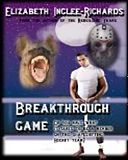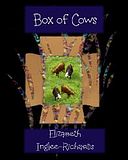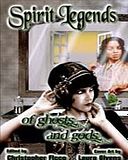“Twelfth Night,” refers of course to both the play by Shakespeare and to the last of the Twelve Days Of Christmas. This last night is also the Catholic holiday of the Feast of Epiphany. In different cultures, this twelfth night after Christmas day is the day that the three Magi arrived in Bethlehem ( the“We Three Kings” of the song) or the day of Christ’s baptism.
I’ve always been fascinated by the pre-Christian traditions that the Twelfth Night festivities co-opted. Much like Christmas itself, Twelfth Night was one of the holidays celebrated in Germanic Paganism, a midwinter celebration. The Yule Log was left to burn until Twelfth Night, which brings to mind enormous logs in immense fireplaces, doesn’t it? Similarly, the traditional Yule Boar as part of a feast can now be seen in the Ham many eat throughout the holidays. The prevalent theory is that the Twelfth Night feasting and revelry was originally based on a Roman holiday at the same time of year called Saturnalia. It was a time when people let loose, partied, switched roles socially and sexually, and had fun. People sang a lot, ran around naked, and played games like women being chased by men and dwarves chasing cranes. There was also what sounded like a very un-fun game where people got dunked in ice water naked.
One of the most interesting parts of how Twelfth Night came to be celebrated is exemplified by the Shakespeare play. If you’re not familiar with it, it involves a lot of gender-switching, mistaken identities, and class disparity jokes. The theory is that Shakespeare wrote it, as he did many of his plays, to reflect the society in which he lived. The gender- switching, aka cross-dressing, was common for men of the day. To a lesser extent the same could be said of women. I would guess that was probably true of the women who could afford to be seen as eccentric.
It is interesting that sexuality was much more fluid in a sense at the time Twelfth Night was written. Especially when you consider that most often all roles were played by men. In this play, a man played a woman, who was disguised as a man, who fell in love with a woman, who was in actuality played by a man. Science of the day held that women were “imperfect versions of men,” to add another layer of confusion. The funny thing is that given the play’s popularity through the ages, the notion of gender fluidity is neither uncommon or particularly a modern idea.
My favorite part of Twelfth Night is the Saturnalia aspect; I imagine a night of bonfires and roasting spits of meat, dancing with linked hands and vats of spiced wine. (Never mind the fact that the wine in the 1600’s was probably spiced because it was borderline awful!) So I guess I’m saying it’s all about the food, drink, and people, which isn’t a bad thing. It’s nice to have a big party to send off the season before it descends into the dark, cold, snowy throes of winter, and that was the point. And use lots of candles- those were traditional gifts to symbolize the light that would eventually return to the world.
This is a good use for that decent bottle of “Two-Buck-Chuck” or decent, but not great, wine you might have left over from the holidays. This recipe is Ina Garten’s, and I don’t like Star Anise, so I don’t add it. You can cut the orange peel into crescent moons or stars just for fun.
In Jane Austen’s time, Twelfth Night was cause for a special cake recipe here. It was tradition for a bean to be baked into the cake, with good luck to the person who got the bean in his or her slice.
Have a lovely Twelfth Night feast, whatever your tradition, and a lucky New Year!











Lovely piece, Jennifer! I love learning about bygone traditions - and as the wife of a Classicist, I always perk up at mention of Saturnalia! ;-)
ReplyDelete